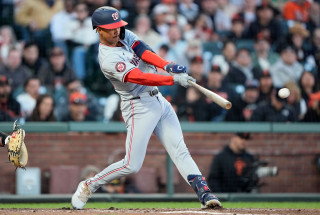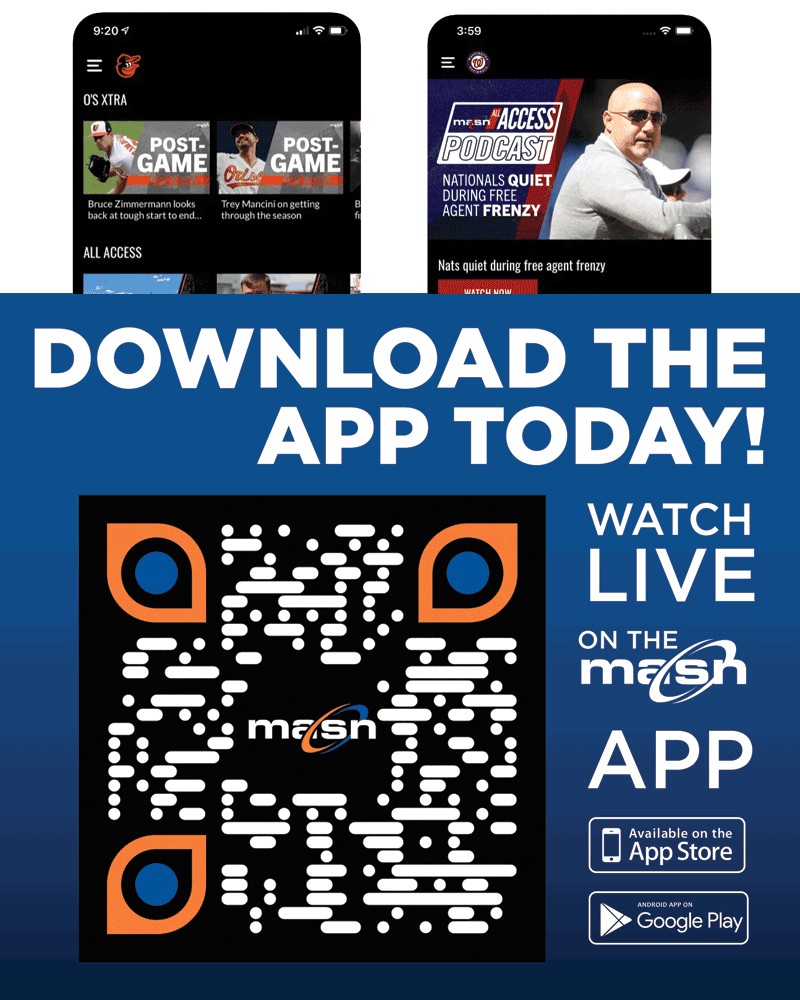The Nationals entered the offseason knowing they needed to bolster their lineup, especially in the power department. They have made two prominent additions so far, trading for Rangers first baseman Nathaniel Lowe and bringing back old friend Josh Bell to serve as designated hitter in his second go-around with the club.
Will those two make a substantial difference to a lineup desperate for more production? If they duplicate their 2024 performances, yes, they should make a difference. Though improvement is still needed elsewhere in the lineup.
It’s worth noting how much (or how little) production the Nationals got from their first basemen and designated hitters last season. Their first basemen combined for a .686 OPS, which ranked 22nd among major league teams. Their collective 0.3 bWAR ranked 21st out of 30 teams. Meanwhile, their assortment of DHs combined for a woeful .615 OPS (28th in the majors) and 0.1 bWAR (25th).
Yeah, that’s bottom-of-the-barrel production out of two of the most important offensive positions in baseball.
Lowe and Bell may not be superstars, but they’re clearly better than what the Nats had in 2024.
Lowe finished with a .762 OPS, a number that would have raised the team’s first basemen rank to 10th, with a 2.7 bWAR that would’ve ranked seventh. Solid offense combined with excellent defense really does make a difference at that position.
Bell, meanwhile, finished with a .725 OPS, which would have been 16th among all teams’ DH outputs. His minus-0.6 bWAR was a problem, though keep in mind the negative stat was mostly a product of his poor defense at first base. It doesn’t appear he’ll be playing the field much in his return to Washington, not with a Gold Glove Award winner now manning that position.
If the Nationals wind up getting top-10 numbers out of first base, and middle-of-the-pack numbers out of their DH, this lineup suddenly looks a lot more imposing. They actually ranked in the top half of the majors in OPS at four other positions last season: left field (fifth), second base (fifth), right field (12th) and shortstop (14th).
So, that’s potentially six of nine spots in the lineup where the Nats could get at least league-average production, if not better. Now, what about the other three positions?
Nationals center fielders ranked 28th in the majors with an OPS of only .624 last season. That’s obviously not ideal, but there was a somewhat worthwhile trade-off there: Their center fielders ranked 13th in bWAR. Jacob Young’s offense may be subpar, but his defense was so good it actually made him a slightly above-average center fielder.
Catcher remains a problem, with Keibert Ruiz, Riley Adams and Drew Millas combining for a .626 OPS and only 1.0 bWAR, both of which ranked 23rd out of 30 teams. Improvement is needed behind the plate, no doubt.
But the real spot on the field where the Nationals need to be much, much better is at the hot corner. Their third basemen ranked 29th in the majors with a measly .589 OPS, 27th in bWAR at minus-0.5. The position was a revolving door all year, from Nick Senzel to Trey Lipscomb to Ildemaro Vargas to José Tena (whose .668 OPS was best among the group).
That’s not going to cut it in 2025, but the question is how the Nats plan to address that issue. It’s a bit complicated.
Brady House has been touted for some time as the long-term answer at third base, but it’s unclear how willing the club is to give the 21-year-old the job out of spring training, especially with pedestrian numbers (.655 OPS) in 54 games at Triple-A Rochester.
The Nationals hoped Lipscomb would be up to the task when they promoted him to the majors after a dazzling spring, but he did very little offensively to warrant serious consideration for the Opening Day assignment. Tena showed offensive promise but looked very uncomfortable in the field at a position he was trying to learn on the fly.
This is why rumors have persisted this winter about Mike Rizzo showing interest in acquiring another third baseman from outside the organization. Even if House is still viewed as the long-term answer, a short-term solution may be needed first. And if there are any doubts about House’s ultimate viability, an alternative might be considered.
For the sake of argument, let’s suppose the Nationals went all-in and signed free agent Alex Bregman. The soon-to-be 31-year-old would require a major investment in terms of years and dollars, but there’s no question his addition would have a dramatic effect on the lineup. His .768 OPS last season would have ranked seventh among all teams’ third base production, and his 4.1 bWAR would’ve ranked third.
Bregman clearly would make a difference. But even if he’s deemed too expensive, the addition of merely a league-average third baseman would do as much – if not more – for the Nats lineup than the additions of Lowe and Bell already have.
By accepting you will be accessing a service provided by a third-party external to https://www.masnsports.com/





